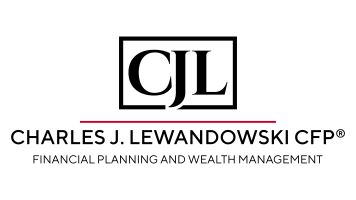Three Financial Planning Tips for Scarlet Knights in the Gig Economy

Over the last year, I have the pleasure of working with several Rutgers grads who were former executives at Fortune 500 companies. Each of them left the corporate world and re-invented themselves as entrepreneurs in the New Economy. They created jobs as independent contractors and are now providing education and services to universities, manufacturing, and health care organizations for large fees. They all had sufficient wealth to carry them through a long retirement, but they recognized that they could improve their financial position by creating a plan to maximize their after-tax income. Here are three methods they used to avoid an unwanted tax bill.
1.Create your Own Retirement Plan by Establishing a Solo 401k – Paul was a former Director of Engineering who created a niche as a manufacturing consultant. Because of his experience, he was able to command a great consulting fee for providing expert advice. His income also included a pension, Social Security benefits, and taxable investment proceeds. Paul recognized that unlike most “retirees”, his total compensation would be greater than the salary he had received from his former employer. Paul chose to establish a Solo 401k to reduce his taxable income from consulting fees.
The Solo 401k is designed for sole proprietors who don’t have any employees other than their spouse. It is exempt from certain federal regulations known as ERISA. In 2021, you can contribute up to $19500 as a salary deferral. If you are over 50 years of age, you can defer and additional $6500 for a total of $26000.
The IRS says, “the business owner wears two hats in a 401(k) plan: employee and employer”. As such, you, the employer, can add a profit-sharing contribution to your plan as well.
“You must make a special computation to figure the maximum amount of elective deferrals and nonelective contributions you can make for yourself. When figuring the contribution, compensation is your “earned income,” which is defined as net earnings from self-employment after deducting both:
- one-half of your self-employment tax, and
- contributions for yourself.”[1]
It is best practice to consult with your tax advisor to determine this amount. In 2021, maximum contributions from all sources, (salary deferral, catchup, and profit sharing) cannot exceed $64500.
There are two optional features that make a Solo 401k more desirable and enhance the utility of the plan.
First, you can add a Roth contribution option. For some high earners, this is the most efficient way to access a Roth.
Second, you may add a loan provision to the plan. Although taking a loan from a retirement account is not normally recommended, there are times when a small business owner may welcome the flexibility of having access to additional cash.
2.Maximize Tax Efficient Charitable Giving by Using a Donor Advised Fund–

Joan, a former Vice President of Procurement, received a large amount of company stock throughout the years as bonuses for her excellent work. Joan would donate $10000 of appreciated shares of stock annually to the College of Engineering as part of her commitment to her graduating class fund. Unfortunately, recent tax code changes reduced the deductibility of her charitable contributions. I recommended using a Donor Advised Fund to increase the tax impact of her donations.
A Donor Advised Fund allows you to make an irrevocable contribution to the Fund and receive credit for the donation during that year. You can contribute appreciated securities directly to the Fund and direct the Fund to contribute to the charity of your choice over one year, several years, or your lifetime. You receive the deduction in the year you make the contribution to the Donor Advised Fund. If your contribution exceeds the standard deduction on your tax return, it may be fully deductible.
The Fund will make donations to a charity under your name. Joan can directly contribute enough appreciated stock to the Fund so that it would account for, let’s say, five years of donations or $50000. If she exceeded the standard deduction in that year, she may receive credit for the full donation to the fund during that year (based on IRS guidelines). She could then direct the Fund to pay the University Foundation $10000 per year for the next five years and the Fund would make the donations on her behalf. This concept is referred to as “bunching donations”.
3. Fully Fund Your Health Savings Account
Geo, a VP of Technology Sales, was laid off because of a corporate re-structuring. He was immediately hired as a consultant by three firms. Once Geo’s health insurance was no longer covered by COBRA, he enrolled his family in a high deductible health plan offered through the HealthCare.gov exchange. By enrolling in a high deductible plan, Geo was eligible to fund a Health Savings Account or HSA.

In 2021, Geo could contribute up to $8200 into this account. His taxable income will be reduced by the amount of his contributions. If the funds are used for qualified health care expenses, they are also tax free when withdrawn. If Geo doesn’t use the funds, he can carry them forward and use the money for health care expenses in retirement. If used properly for health care expenses, he has created a tax-free source of funds in retirement.

The Solo 401k, Donor Advised Fund, and Health Savings Account are three tools that high earning individuals should evaluate as a part of a comprehensive financial plan. Although they may not be appropriate for everyone, they should be high on the list for entrepreneurs eager to improve their personal balance sheet.
Please call me so we can plan together.
01/2021
Advisory services offered through Capital Analysts or Lincoln Investment, Registered Investment Advisers. Securities offered through Lincoln Investment, Broker Dealer, Member FINRA/SIPC.www.lincolninvestment.com
West Coast Financial Group, Inc. and the above firms are independent and non-affiliated.
Tax advice is not offered through, nor supervised by Lincoln Investment or Capital Analysts
[1] https://www.irs.gov/retirement-plans/one-participant-401k-plans
